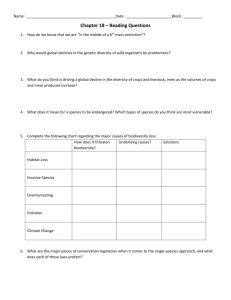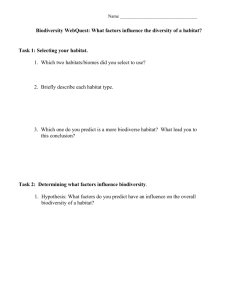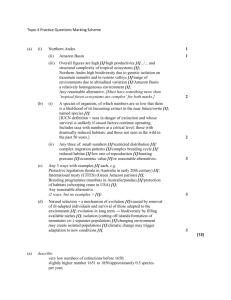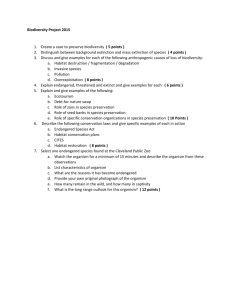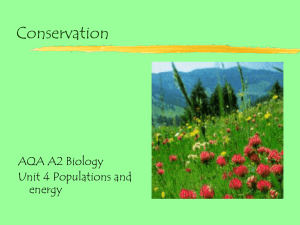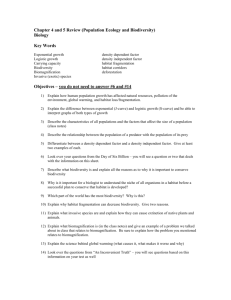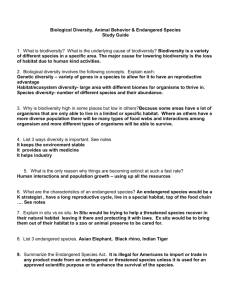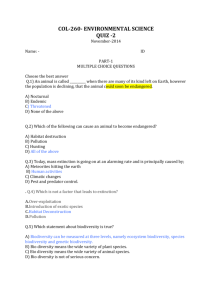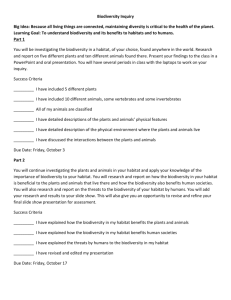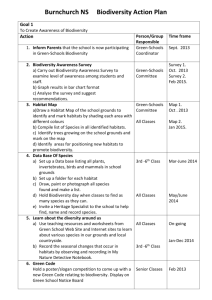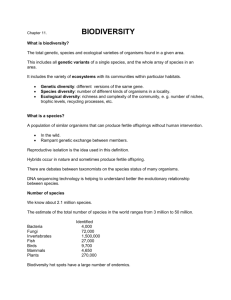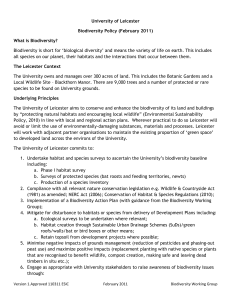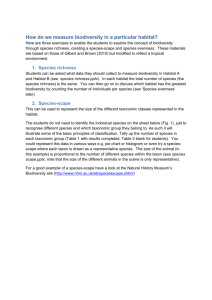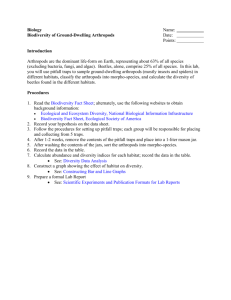Biology Chapter 6 6.3 Biodiversity I. Value of Biodiversity
advertisement
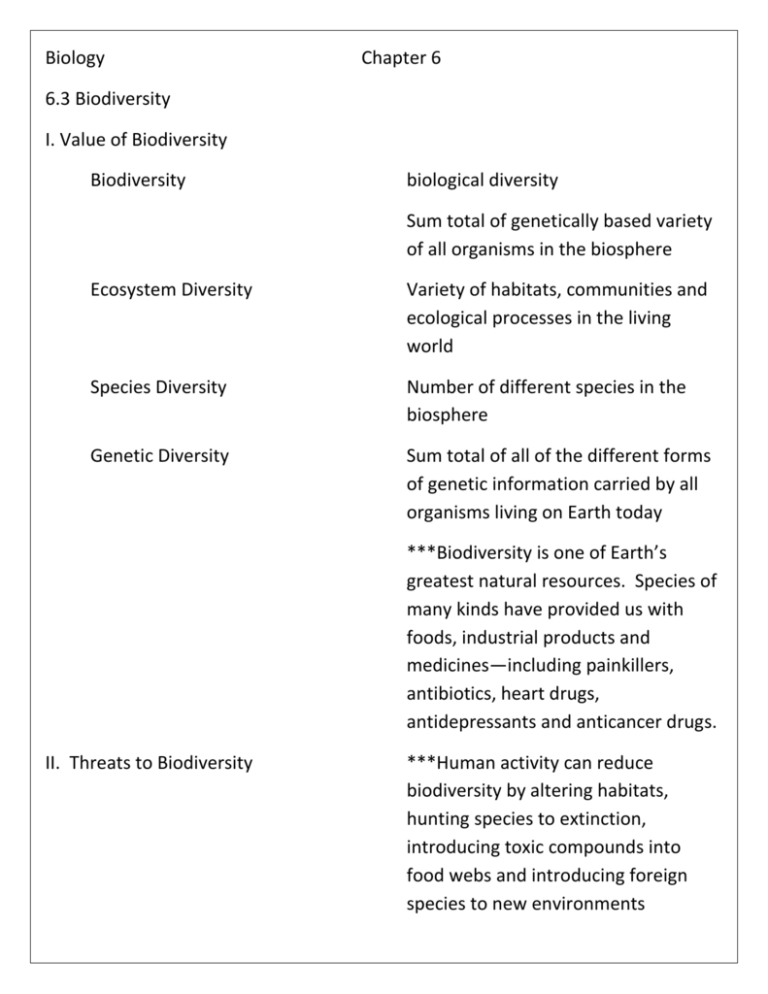
Biology Chapter 6 6.3 Biodiversity I. Value of Biodiversity Biodiversity biological diversity Sum total of genetically based variety of all organisms in the biosphere Ecosystem Diversity Variety of habitats, communities and ecological processes in the living world Species Diversity Number of different species in the biosphere Genetic Diversity Sum total of all of the different forms of genetic information carried by all organisms living on Earth today ***Biodiversity is one of Earth’s greatest natural resources. Species of many kinds have provided us with foods, industrial products and medicines—including painkillers, antibiotics, heart drugs, antidepressants and anticancer drugs. II. Threats to Biodiversity ***Human activity can reduce biodiversity by altering habitats, hunting species to extinction, introducing toxic compounds into food webs and introducing foreign species to new environments Extinction Species disappears from all or part of its range Endangered Species Species whose population size is declining in a way that places it in danger of extinction III. Habitat Alteration Habitat Fragmentation Land is developed – natural habitats may be destroyed Development often splits ecosystems into pieces a. Remaining pieces of habitat become biological “islands” Biological Islands Any patch of habitat surrounded by a different habitat IV. Demand for Wildlife Products Convention on International Trade in Endangered Species (CITES) Bans international trade in products derived from a list of endangered species a. Cannot enforce laws in remote wilderness V. Pollution DDT First pesticide widely used a. b. c. d. Cheap Remains active for a long time Kills many pests Disease-carrying mosquitos Hazardous a. Nonbiodegradable Not broken down by metabolic process by bacteria, plants or animals b. Picked up organisms – cannot eliminate it from their bodies Biological Magnification Concentrations of a harmful substance increase in organism at high trophic levels in a food chain or food web a. Affects the entire food web – toplevel carnivores are at highest risk VI. Introduced Species Invasive Species VII. Conserving Biodiversity Conservation Apparently harmless plants and animals that humans transport around the world either accidently or intentionally Organisms introduced into a new habitat which lacks the parasites and predators that control their population of the new organism Preserving Earth’s biodiversity for future generations Ecology – wise management of natural resources including the preservation of habitats and wildlife . ***Conservation efforts focus on protecting entire ecosystems as well as single species. Protecting an ecosystem will ensure that the natural habitats and the interactions of many different species are preserved at the same time. Hot Spots A place where significant numbers of habitat and species are in immediate danger of extinction as a result of human activity.





